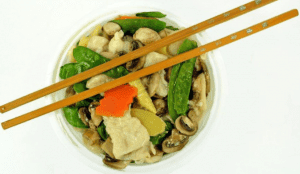Vegetable Symphony: Exploring the Vibrant World of Vegetables in Chinese Cuisine
Introduction: Chinese cuisine is celebrated for its harmonious blend of flavors, textures, and vibrant colors, and at the heart of this culinary symphony are an array of fresh and diverse vegetables. From the bustling markets to the kitchens of homes and restaurants, vegetables play a pivotal role, contributing not only to the visual appeal of dishes but also to their nutritional richness. In this exploration, we will delve into the artistry of Chinese vegetable-centric cooking, uncovering the cultural significance, cooking techniques, and a medley of delightful vegetable-based dishes that showcase the versatility of these humble yet essential ingredients.
Cultural Significance: Vegetables hold a special place in Chinese culture, embodying principles of balance, harmony, and the pursuit of well-being. The use of seasonal and locally sourced vegetables reflects the traditional Chinese approach to nutrition and a deep connection to nature. Additionally, the rich symbolism associated with certain vegetables, such as longevity and prosperity, adds layers of meaning to the act of preparing and consuming vegetable-based dishes.
Diversity of Vegetables: Chinese cuisine embraces a vast array of vegetables, ranging from leafy greens to tubers, root vegetables, and various fungi. Commonly used vegetables include bok choy, Chinese broccoli (gai lan), snow peas, water spinach (ong choy), and Napa cabbage. Additionally, mushrooms like shiitake and wood ear fungus contribute unique textures and flavors to a myriad of dishes.
Cooking Techniques:
1. Stir-Frying (Chao):
Stir-frying is a quintessential Chinese cooking technique that highlights the natural flavors and textures of vegetables. Quick cooking in a hot wok preserves the crispness of vegetables while allowing them to absorb the savory seasonings.
2. Steaming (Zheng):
Steaming is a gentle cooking method that retains the vibrant colors and nutrients of vegetables. It is often used for delicate greens, such as gai lan, and allows for a clean, fresh taste.
3. Braising (Hong Shao):
Braising involves slow-cooking vegetables in a flavorful liquid, creating tender and succulent dishes. Braised vegetables often absorb the rich sauces and seasonings, resulting in a comforting and hearty experience.
4. Blanching (Shui Zhu):
Blanching involves briefly immersing vegetables in boiling water, preserving their vibrant colors and crisp textures. This technique is often used for preparing vegetables before stir-frying or as a base for cold dishes.
5. Pickling and Fermentation:
Pickling and fermentation add depth and complexity to the flavors of vegetables. Techniques such as pickled mustard greens or fermented tofu contribute tanginess and umami to various dishes.
Iconic Vegetable-Based Dishes:
1. Mapo Tofu (Mapo Doufu):
While tofu is the star of this dish, it is complemented by a flavorful mix of garlic, ginger, and fermented black beans. Sichuan peppercorns add a numbing sensation, creating a robust and spicy vegetable-based delight.
2. Stir-Fried Vegetables (Chao Cai):
A medley of colorful vegetables stir-fried to perfection is a staple in Chinese cuisine. The combination may include bell peppers, carrots, mushrooms, and snow peas, showcasing the art of balance and simplicity.
3. Braised Eggplant (Di San Xian):
This dish features eggplant, bell peppers, and potatoes braised in a savory sauce, resulting in a comforting and flavorful vegetable ensemble.
4. Vegetarian Spring Rolls (Chun Juan):
Stuffed with julienned vegetables, mushrooms, and sometimes tofu, vegetarian spring rolls are a crispy and delightful appetizer that celebrates the freshness of vegetables.
5. Hot and Sour Soup (Suan La Tang):
This iconic soup combines a variety of vegetables, such as wood ear fungus, bamboo shoots, and tofu, in a tangy and spicy broth. It exemplifies the art of balance in Chinese cuisine.
Health and Nutrition: Chinese vegetable-based dishes not only offer a feast for the senses but also contribute to a healthy and balanced diet. Vegetables are rich in vitamins, minerals, and dietary fiber, promoting overall well-being and aligning with the traditional Chinese emphasis on holistic health through nutrition.
Adaptability and Innovation: Chinese cuisine’s adaptability is evident in its incorporation of international and regional vegetables. While traditional vegetables remain staples, chefs and home cooks continue to experiment with new ingredients, resulting in innovative dishes that reflect the ever-evolving nature of Chinese culinary artistry.
In conclusion, the vibrant world of vegetables in Chinese cuisine is a testament to the culinary finesse that embraces tradition, nature, and creativity. From the bustling markets to the dinner tables, vegetables play a central role, providing not only sustenance but also a canvas for flavor exploration.
The meticulous techniques, diverse array of vegetables, and iconic dishes showcase the depth and richness of Chinese vegetable-centric cooking. In a world where culinary traditions constantly evolve, the enduring presence of vegetables in Chinese cuisine serves as a reminder of the profound connection between food, culture, and well-being.





